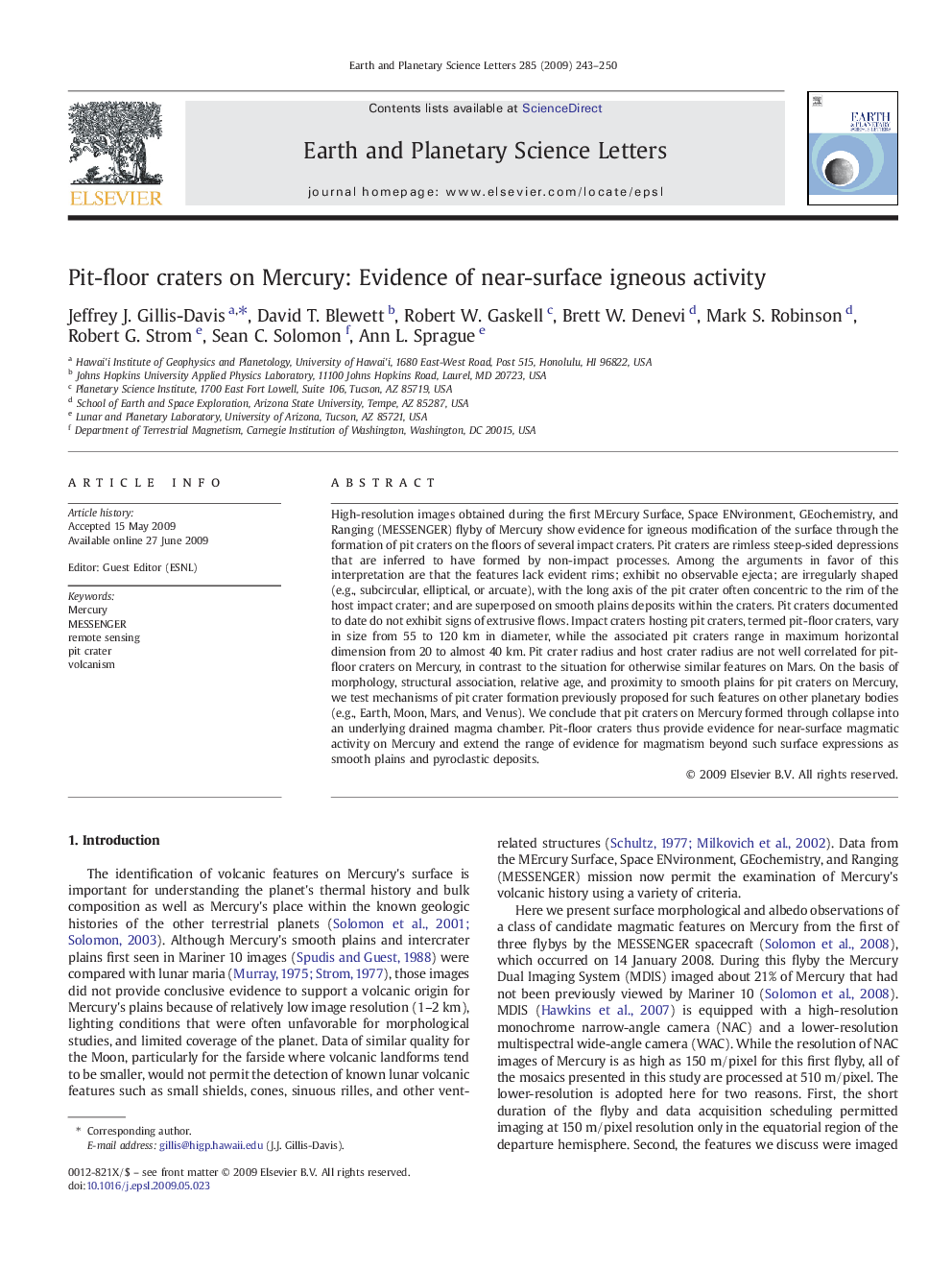| Article ID | Journal | Published Year | Pages | File Type |
|---|---|---|---|---|
| 4678927 | Earth and Planetary Science Letters | 2009 | 8 Pages |
High-resolution images obtained during the first MErcury Surface, Space ENvironment, GEochemistry, and Ranging (MESSENGER) flyby of Mercury show evidence for igneous modification of the surface through the formation of pit craters on the floors of several impact craters. Pit craters are rimless steep-sided depressions that are inferred to have formed by non-impact processes. Among the arguments in favor of this interpretation are that the features lack evident rims; exhibit no observable ejecta; are irregularly shaped (e.g., subcircular, elliptical, or arcuate), with the long axis of the pit crater often concentric to the rim of the host impact crater; and are superposed on smooth plains deposits within the craters. Pit craters documented to date do not exhibit signs of extrusive flows. Impact craters hosting pit craters, termed pit-floor craters, vary in size from 55 to 120 km in diameter, while the associated pit craters range in maximum horizontal dimension from 20 to almost 40 km. Pit crater radius and host crater radius are not well correlated for pit-floor craters on Mercury, in contrast to the situation for otherwise similar features on Mars. On the basis of morphology, structural association, relative age, and proximity to smooth plains for pit craters on Mercury, we test mechanisms of pit crater formation previously proposed for such features on other planetary bodies (e.g., Earth, Moon, Mars, and Venus). We conclude that pit craters on Mercury formed through collapse into an underlying drained magma chamber. Pit-floor craters thus provide evidence for near-surface magmatic activity on Mercury and extend the range of evidence for magmatism beyond such surface expressions as smooth plains and pyroclastic deposits.
